Have you ever felt that there are too many cooks in the content kitchen? Without a content approval workflow, content creation can become overwhelming and inefficient. That’s where approval software comes in. It empowers teams to streamline their processes while ensuring content quality and consistency.
According to Forbes, 90% of marketers use content in their marketing strategies. Their biggest challenges include generating content ideas, creating more content faster, and attracting quality leads. Implementing a content approval workflow can help solve these common hurdles. Let’s see how.
What is a content approval workflow?
A content approval workflow is a system that outlines content publishing and distribution steps. Marketing teams use it to manage content creation, review, and approval. It includes roles and responsibilities, approval layers, review mechanisms, deadlines, and content quality checks. The system ensures consistency, transparency, and accountability. It also helps optimize content quality and improve team collaboration.
Workflow approval software are typically used to streamline and automate these processes.


Multi-level approval flow in Planable
Step-by-step guide to creating your content approval workflow
1. Identify roles and responsibilities: who needs to be involved before you get started?
A smooth content approval workflow depends on clearly defined roles and responsibilities. Here’s how to ensure everyone’s on the same page:
Plan for every role involved in your content creation process. Consider everyone from content strategists and writers to editors and subject matter experts.
Involve key decision-makers like executives and SEO specialists, but be careful not to involve too many people in the approval process. If a team member’s direct input isn’t necessary, keep them out of the workflow. Having too many hands on deck can confuse matters.
Clearly define each team member’s role in the workflow. Transparency prevents bottlenecks and ensures accountability. Everyone involved, from ideation to publication, should understand their specific contributions.
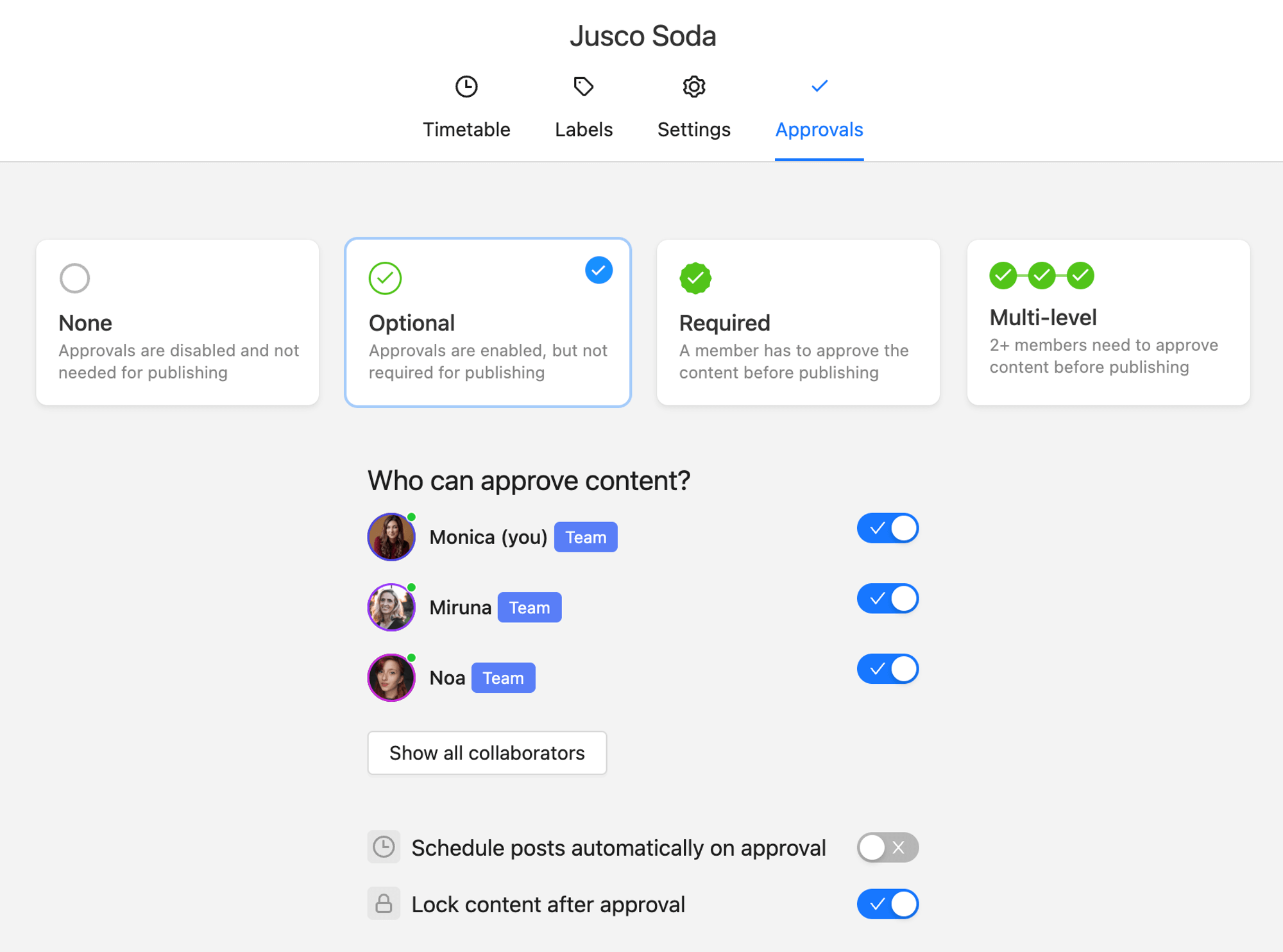

Content approval flows in Planable
The example above shows how Planable makes it easy to define roles and set up an efficient content approval workflow. By clearly defining responsibilities, you create a streamlined process with clear ownership, minimizing confusion and delays. This workflow approval software is practically every content writer’s dream.
2. Draft the content creation process: what stages and milestones does content go through?
Now that everyone’s roles are clear, it’s time to map out the content approval workflow.
Gather your marketing team for a brainstorming session. Go through all the steps involved in content creation in as much detail as possible, encouraging everyone to participate to ensure all activities are mapped out.
Next, decide on a sequence for your workflow. It typically starts with ideation, continues with content creation, and then goes through review and revision stages. Break down each stage into milestones specific to your team’s workflow.


Content approval workflow in Planable
Use this opportunity to identify redundant steps or decision bottlenecks. Ask team members where they feel that content gets stuck or what they would like to improve. Implement changes in the final workflow.
You can leverage dedicated workflow management software to visualize the process better, streamline collaboration, and ensure a clear, user-friendly experience for your marketing team.
Planable’s marketing campaign plan feature comes in handy when you need to manage multiple stakeholders and approval layers while staying on top of content creation and publishing on various platforms.
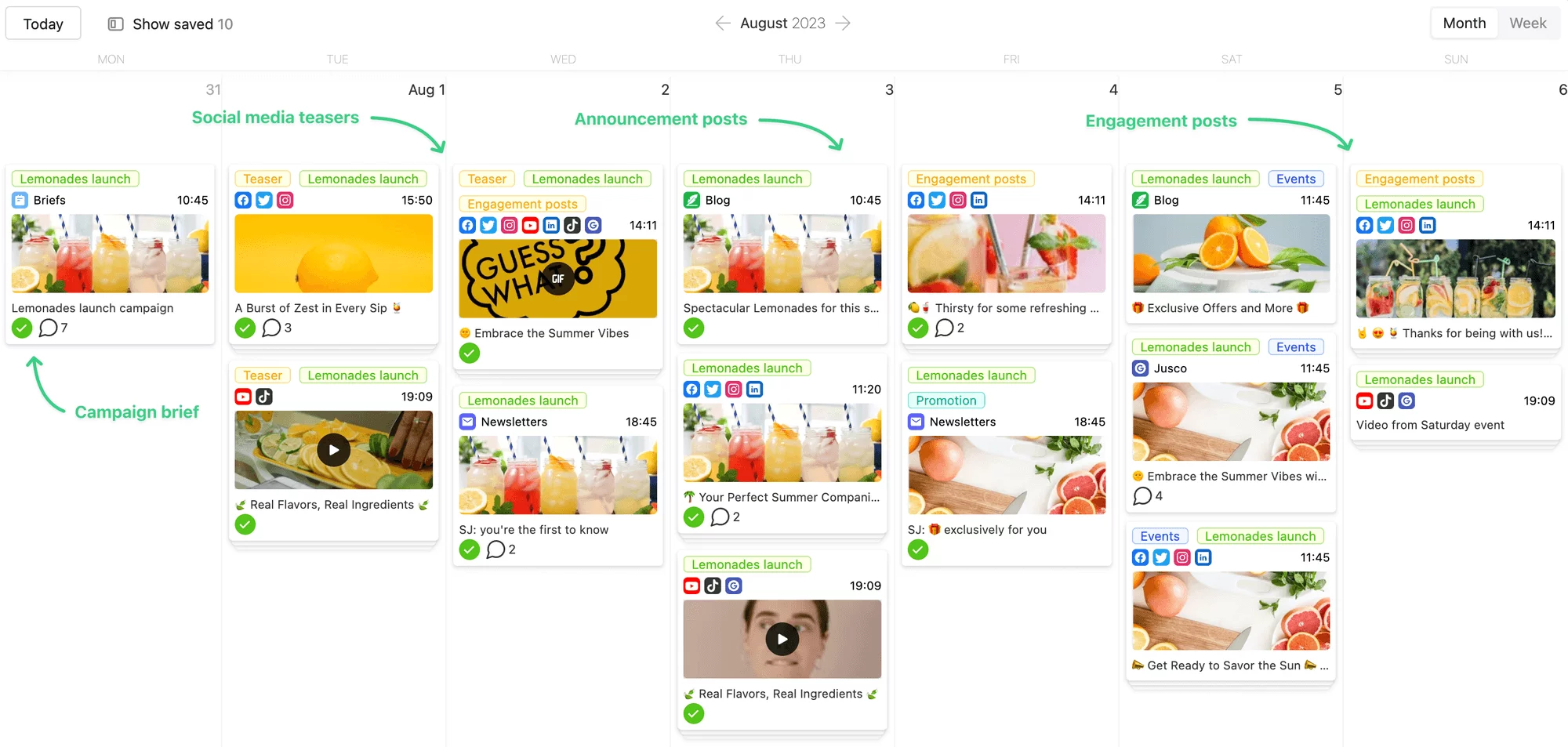

Campaign planning in Planable’s content calendar
3. Implement an approval system: how can you simplify the process?
A well-defined approval system is the engine that drives your content approval workflow and simplifies everyone’s work.
Design your workflow for visibility to create a frictionless process. This allows team members to easily track activity history and identify bottlenecks.
Implement approval layers to ensure clarity and remove decision blockages. For example, a social media post approval might involve:
- Brainstorming and idea approval
- Content writing and editing
- Design or video production
- Final content approval
- Content scheduling and publishing
Planable makes this whole process a breeze. With its Universal Content feature, your marketing team can work together on all types of content, including brainstorming documents and social media posts. With a workflow approval software like Planable, it’s easy to ask for and get real-time feedback, approve content, and schedule social media posts directly on platforms such as Facebook, Instagram, X (Twitter), LinkedIn, GMB, and others.
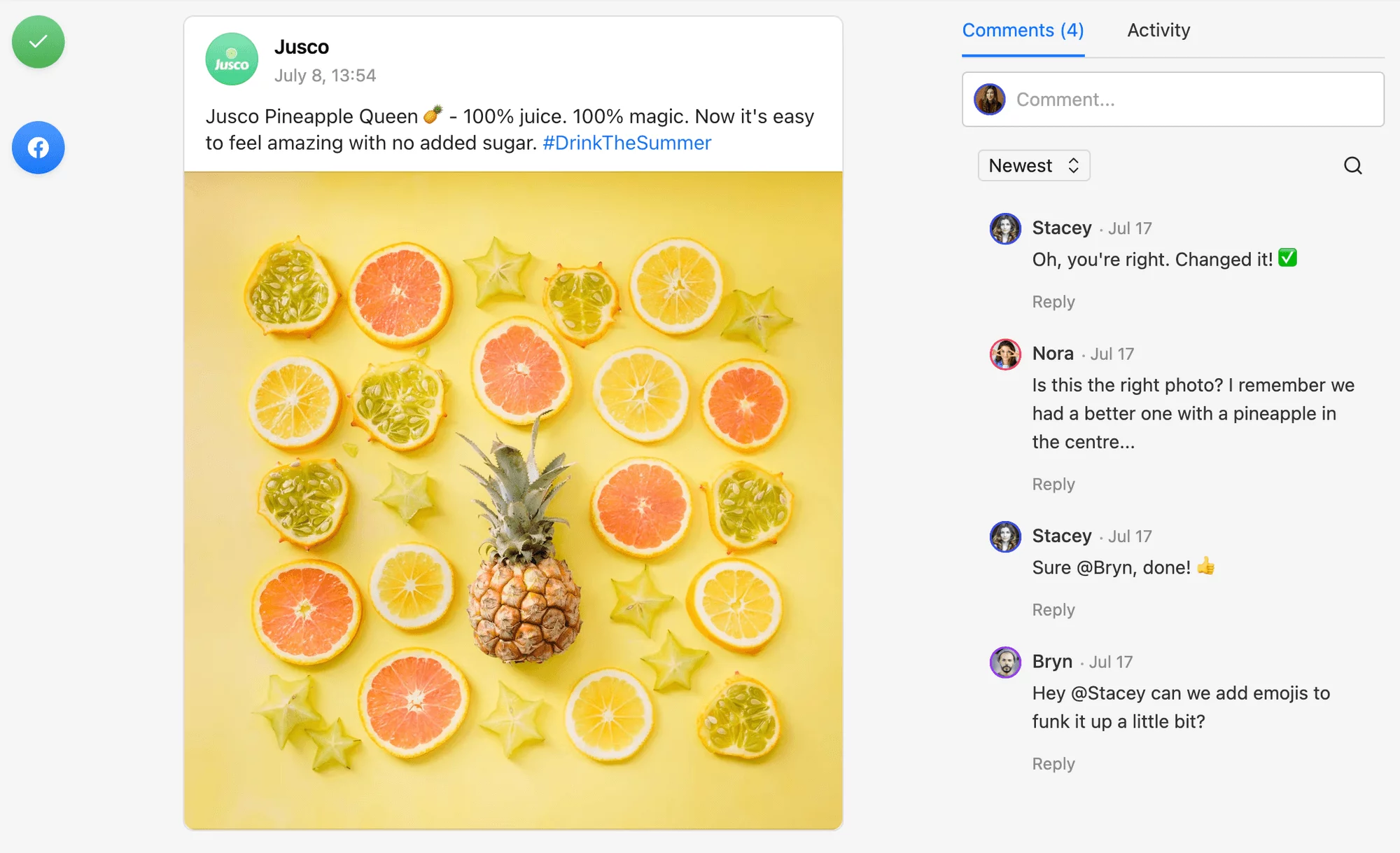

Content collaboration in Planable
While keeping track of all the moving parts might have taken multiple documents and email threads in the past, content approval software has greatly simplified things. Planable allows you to set up clear approval layers and permissions so that everyone knows what the next step is and who is accountable.
Get granular about who views, approves, edits, or publishes content so the process is streamlined for all stakeholders involved.
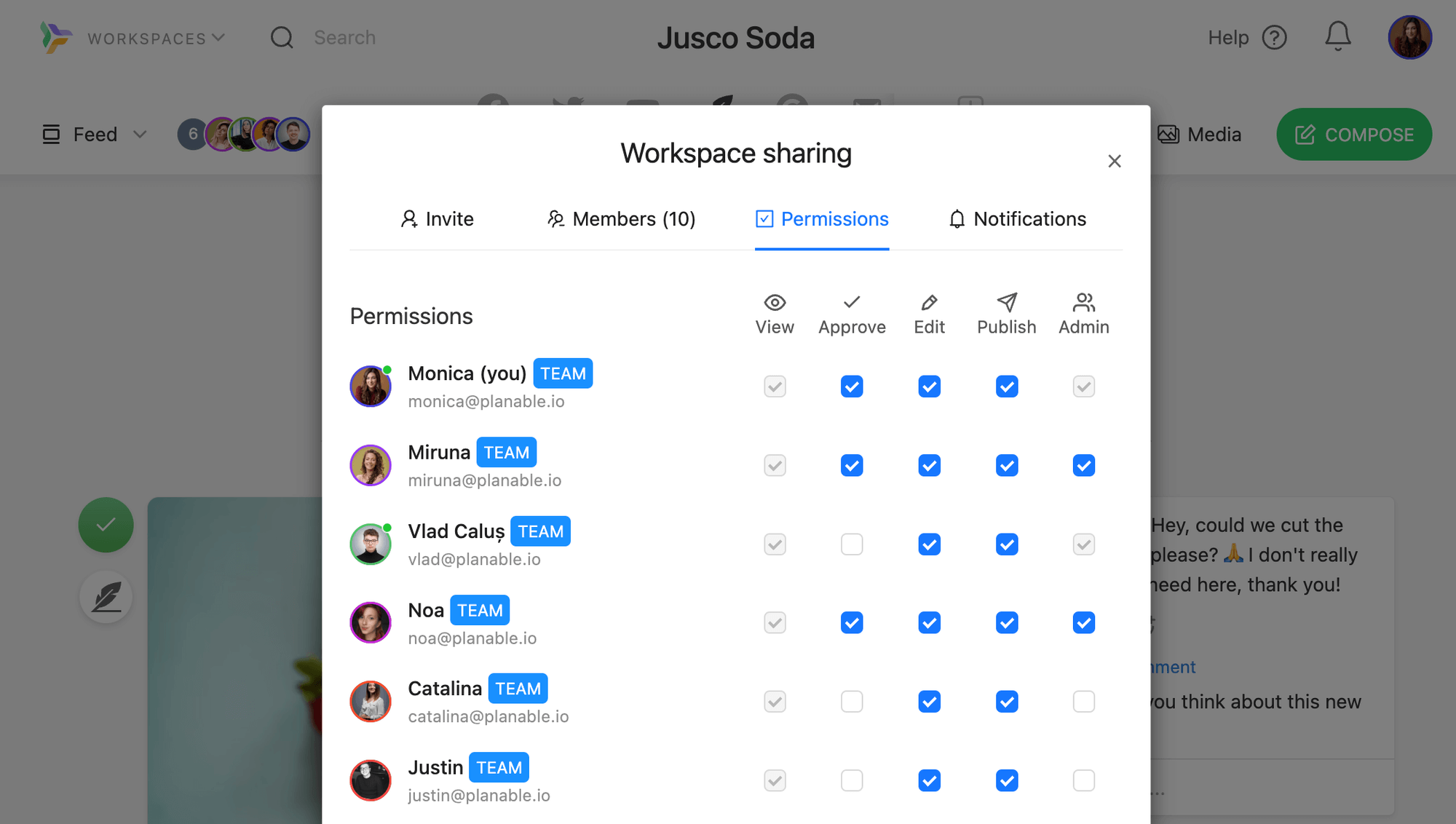

Workspace permissions in Planable
For improved visibility and accountability, you can access your activity history and see what changes were made and by whom.
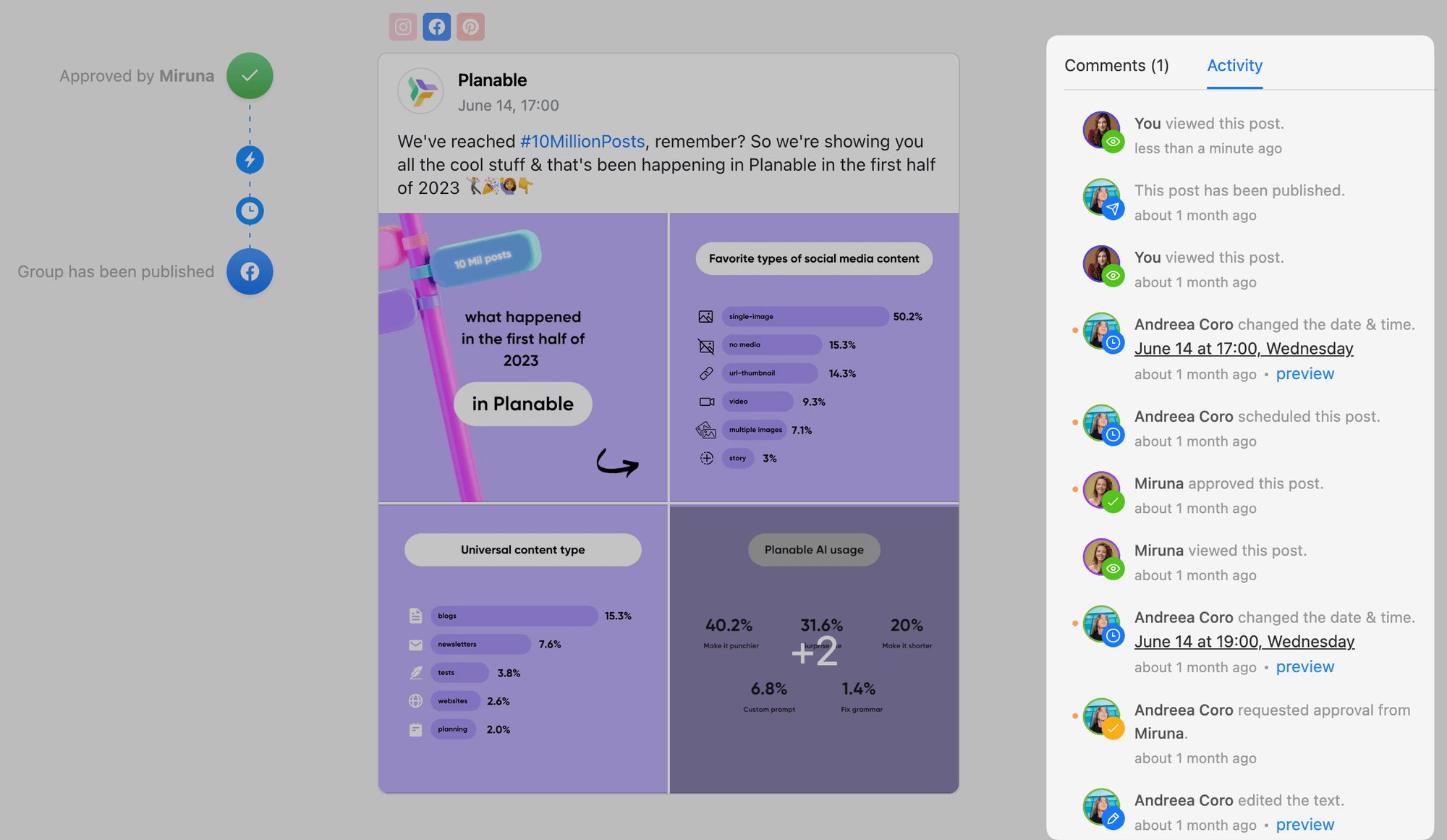

Content version history in Planable
4. Monitor and optimize the workflow: how can you further enhance the workflow?
Creating the perfect content workflow is an iterative process. So, the final step to an effective approval workflow is ensuring a review process is in place.
Assess the efficiency of the content approval workflow regularly by monitoring team productivity and identifying problems. Leverage analytics from your project management tool to identify areas for improvement.
Planable offers powerful and visually appealing analytics dashboards to help you understand performance and identify opportunities for growth.
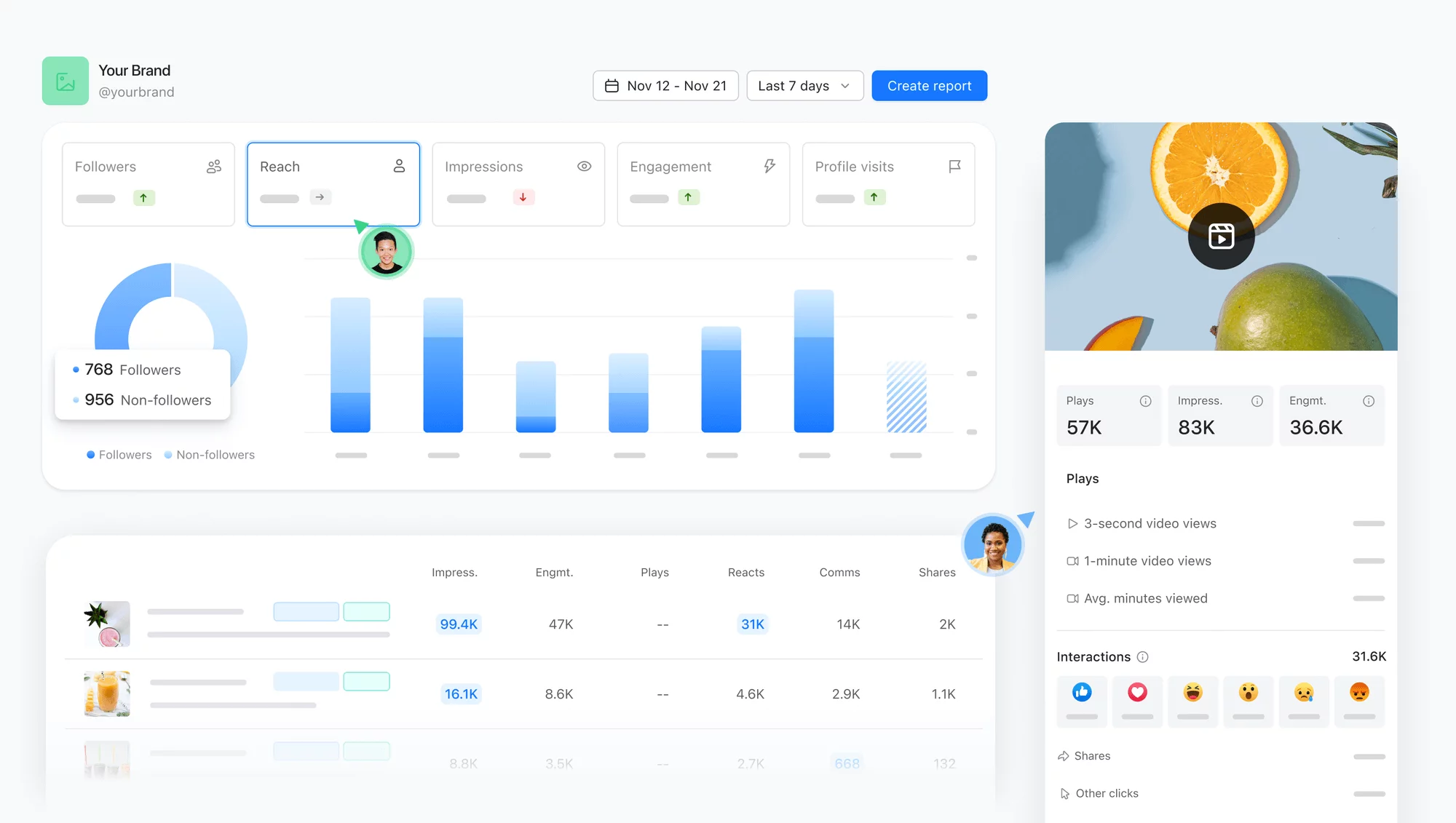

Content analytics dashboard in Planable
Refine your system over time, learning from experience and adapting to the team’s and business’s changing needs and goals.
As you refine your approval workflow, consider its potential as a foundation for future projects. A well-oiled workflow can serve as a valuable template for upcoming campaigns or content projects.
For example, if you are a freelancer or agency working with multiple clients, you can duplicate content approval workflows and adjust them rather than starting from scratch to save time and effort.
Best practices for managing an effective content approval process
A well-defined content approval workflow can make a world of difference in how well your team collaborates and how efficient your content output is. Follow these best practices to ensure your approval process runs smoothly:
Keep roles and responsibilities clear
I mentioned this above, but it’s important to reiterate it because it’s not a one-time step. The last thing you want is for your team members to be confused about what they should do and who they should report to. Your marketing team is bound to grow, so adjust the approval process regularly to accommodate new roles and changing responsibilities.
Set clear guidelines
No matter how big or small your content team is, you need clear guidelines to keep everyone aligned. People must be on board with your content standards and expectations to ensure consistency and quality.
Guidelines may include:
- Content style guide that outlines your brand voice, tone, grammar, and formatting preferences.
- Content quality checklist that defines key criteria for different content types, such as SEO optimization, engagement elements, accuracy, and adherence to brand voice.
- Editorial calendar that contains content topics, deadlines, and assigned team members.
- Approval processes outline, including roles, responsibilities, and workflows.
Establish deadlines
Establish clear deadlines for every step of the content approval process. Deadlines should be reasonable to allow people to do their best work and efficient to ensure content is delivered consistently and timely on all channels.
It’s also important to stick to the deadlines to ensure predictability in publishing and foster a culture of accountability within the team.
Implement a feedback system
Feedback can quickly get chaotic without the right systems and guidelines in place. To avoid a very noisy content kitchen, do the following:
- Provide clear guidelines for giving constructive feedback.
- Define responsibilities for providing and reviewing feedback.
- Track revisions to ensure continuous improvement and accountability.
- Use content management tools that have feedback and revisions integrated into the content creation process to maintain focus.
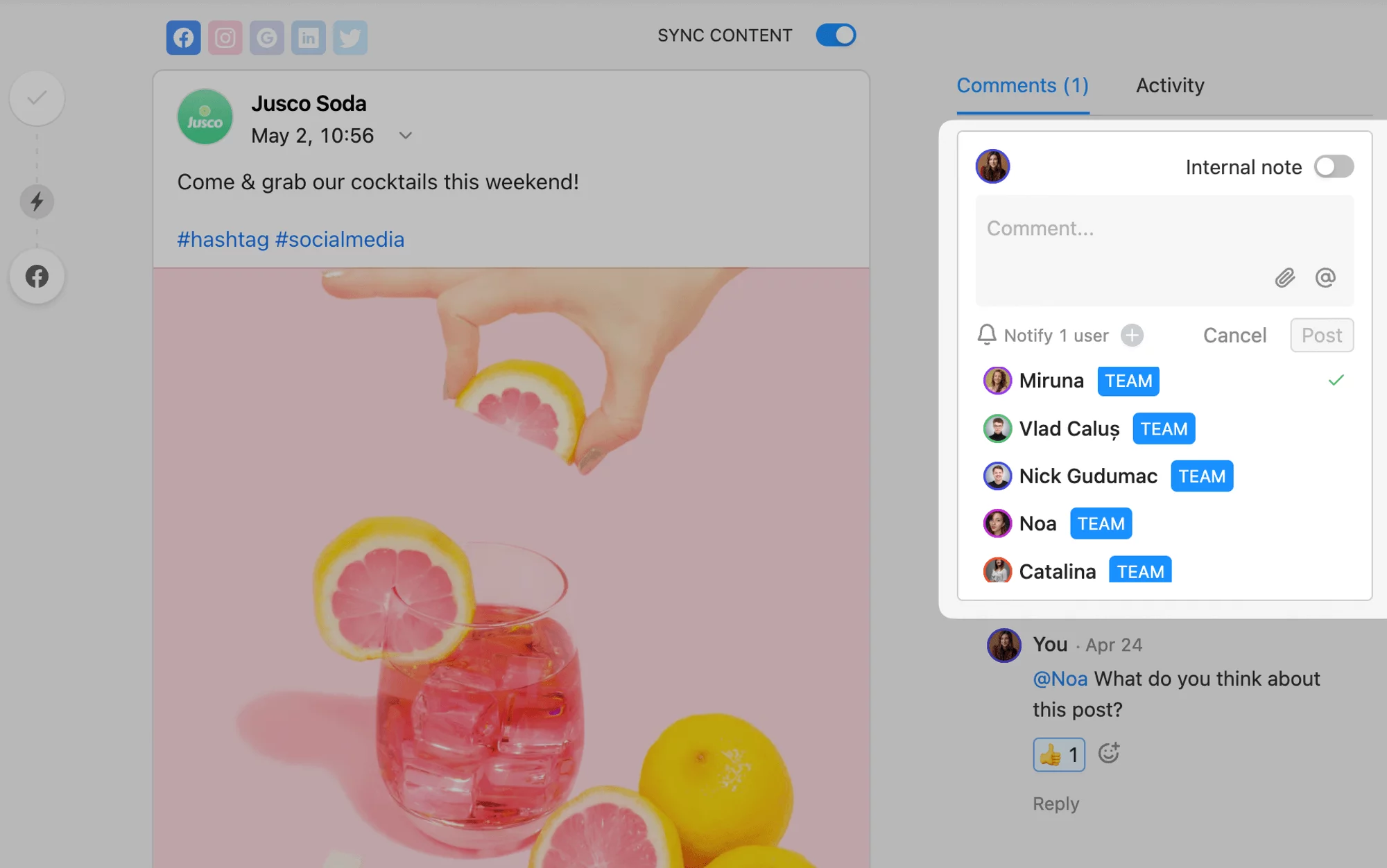

Team feedback on content in Planable
Schedule regular review meetings
Keep communication channels open and get regular feedback from team members to prevent delays and avoid misunderstandings.
While communicating via email or a messaging platform like Microsoft Teams can work, it’s best to use a content management tool for all content-related needs for streamlined collaboration and improved efficiency.
Planable was designed with collaboration in mind, so content teams can easily assign tasks, get feedback, and make sure stakeholders review work in a timely manner.
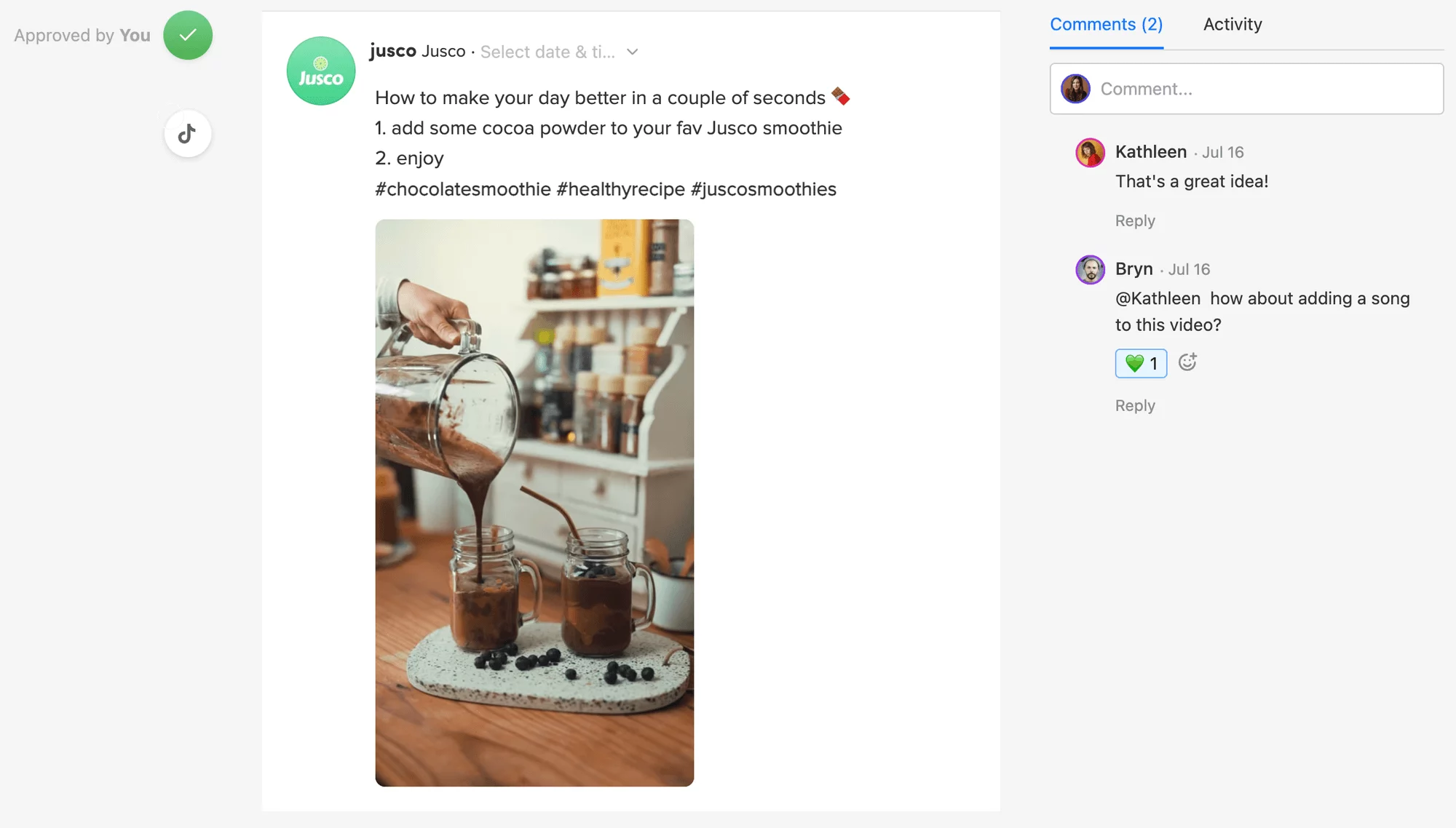

Approved content with comments in Planable
Maintain open, ongoing communication
Create a culture of open exchange throughout the content approval process.
When people feel encouraged to communicate, they can be more creative and daring with their ideas. You can also find out about possible problems and address them before they stifle the content creation process.
Open communication fosters collaboration among team members, allowing for feedback and insights that can lead to improvements and innovation.
Types of content approval workflows
The content approval workflow can differ depending on the content type. Let’s take a look at the particularities of the most popular distribution channels.
Social media content approval
An effective social media content approval workflow starts with researching trending topics to generate captivating post ideas for each social media channel.
After writing the content, the draft goes through a revision process, ensuring it aligns with the brand’s voice and tone while meeting established quality standards. For social media specifically, you may want to ensure brevity, engagement, and alignment with the particularities of each social media platform.
The process can include social media marketing managers, copywriters, designers, and other stakeholders who may need to approve posts before publishing.
Blog post content approval
Blog post approval starts with brainstorming sessions involving content strategists and marketers to solidify post ideas.
The writer then crafts the content following an approved outline and style guide. An editor ensures clarity, accuracy, and brand adherence. In some cases, an SEO specialist optimizes the post for search engines. Finally, a senior editor or marketing manager grants final approval before publication.
This multi-step process ensures high-quality, informative, and strategically optimized content.
Marketing email/newsletter approval
Newsletter approval requires a collaborative effort to ensure emails resonate with your audience and achieve marketing goals.
Once the marketing team approves initial ideas, a copywriter drafts the marketing email or newsletter, incorporating visuals, CTAs, and social media buttons. An editor then reviews for clarity and brand alignment.
Finally, an email marketing manager may schedule the newsletters and conduct A/B testing to optimize campaigns.
Press release approval
Press releases, unlike everyday content, demand a high degree of scrutiny due to their reputation management role. Understanding how to write a press release is crucial, as it ensures that every detail is carefully considered.
The process starts with a discussion involving the PR team to determine the best course of action. Once a strategy is defined, the copywriter or PR specialist drafts the content, ensuring every element is accurate and aligns with the message.
Final approval comes from the PR team and other stakeholders before the release is distributed to targeted platforms and websites.
E-book approval
Given the length and complexity of e-books, a well-defined approval workflow is essential to ensure quality and adherence to deadlines.
The process is similar to the ones above, beginning with brainstorming and approval for the overall concept and outline. The content writer then puts the draft together chapter by chapter. While social media posts may require only one feedback session, an e-book may need multiple review milestones and approvals before moving on.
Once the entire e-book is complete, an editor checks it for clarity, consistency, accuracy, and overall alignment with the outline and initial concept. Finally, edits are incorporated, and the editor or a senior team member gives final approval before the e-book is formatted, designed, and published.
Webinar script approval
Webinars typically involve different members of the marketing team, including marketing managers, content writers or copywriters, video editors, graphic designers, and external stakeholders.
The marketing or content manager, together with webinar organizers, will create an outline and overall concept for the event. Based on that, a writer will create the webinar script draft. The team organizing the webinar will then review the draft for relevance and brand authenticity.
After one or several feedback sessions, the team can give final approval for the webinar script and use it for a successful event.
Planable’s Universal Content feature lets key stakeholders collaborate on all types of content, including social media posts, blog posts, emails, webinar scripts, and more, acting as a hub for all content needs.


Collaboration on a blog post in Planable
Planable features that enhance the content creation process
Planable is one of the best tools out there for streamlining the content creation and approval process.
Here are some of the features that will help you publish quality content consistently and achieve your goals:
- Visibility and approval layers to decide who sees the content and who is responsible for approving it.
- Multiple approval layer workflow to manage even the most complex projects and teams.
- Feedback, comments, and internal notes on content so that communication is streamlined and visible to all interested stakeholders.
- A visually appealing content calendar, complete with visibility into comments and approvals. Get a sense of how things are going with only one look.
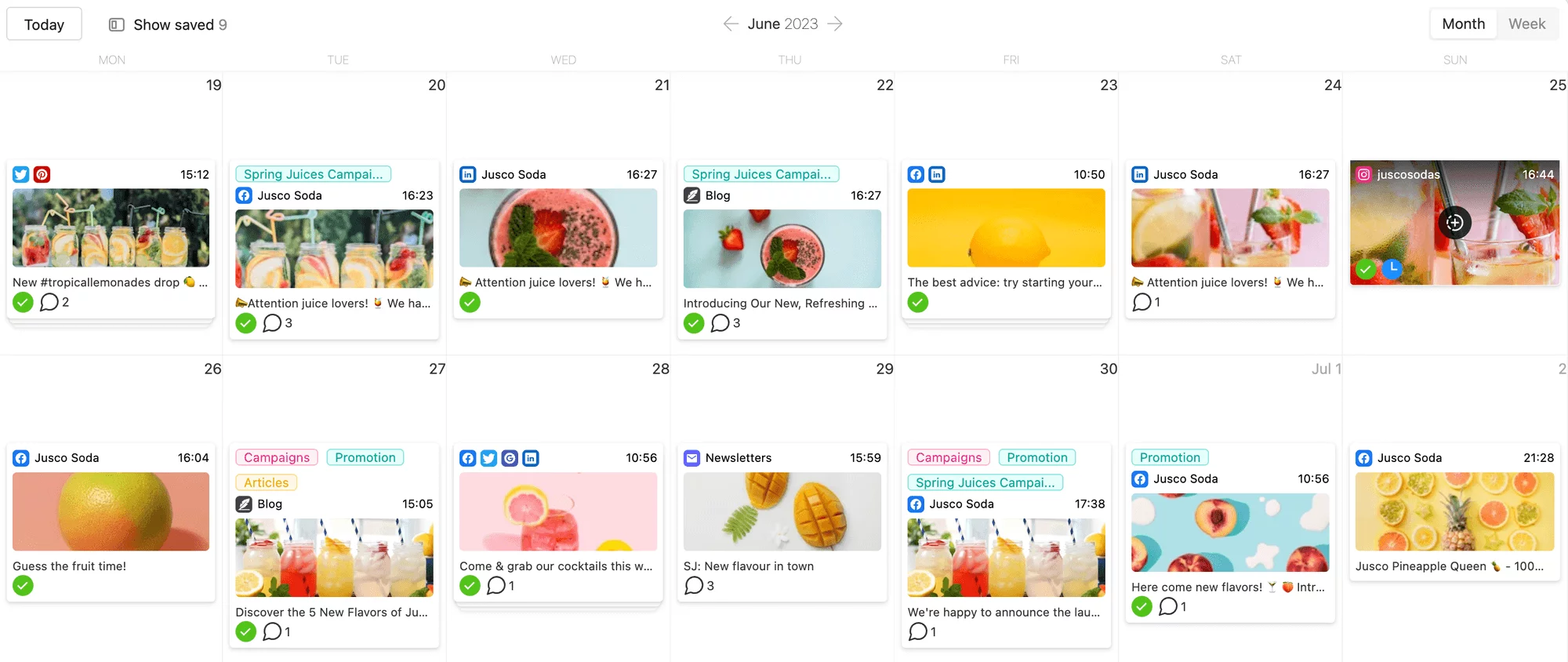

Content calendar view in Planable
- Activity history to get visibility into the content process and enhance team accountability.
- Direct and automated scheduling once content is approved, through integrations with multiple social media platforms.
- Color-coded labels for better content organization and discoverability.
- Advanced analytics for social media to understand what’s working and what you need to improve in the content review step.
- Content and workspace sharing with external collaborators so that clients, agencies, and freelancers can easily align with your content approval process. Here’s what content creators love about this feature:
“The approval process is really easy and fast, my client gets to see exactly how it would go live. It’s saving a lot of my time by redoing posts in a separate deck, sending links over emails, and getting communication lost in the process.” – Fernanda A.
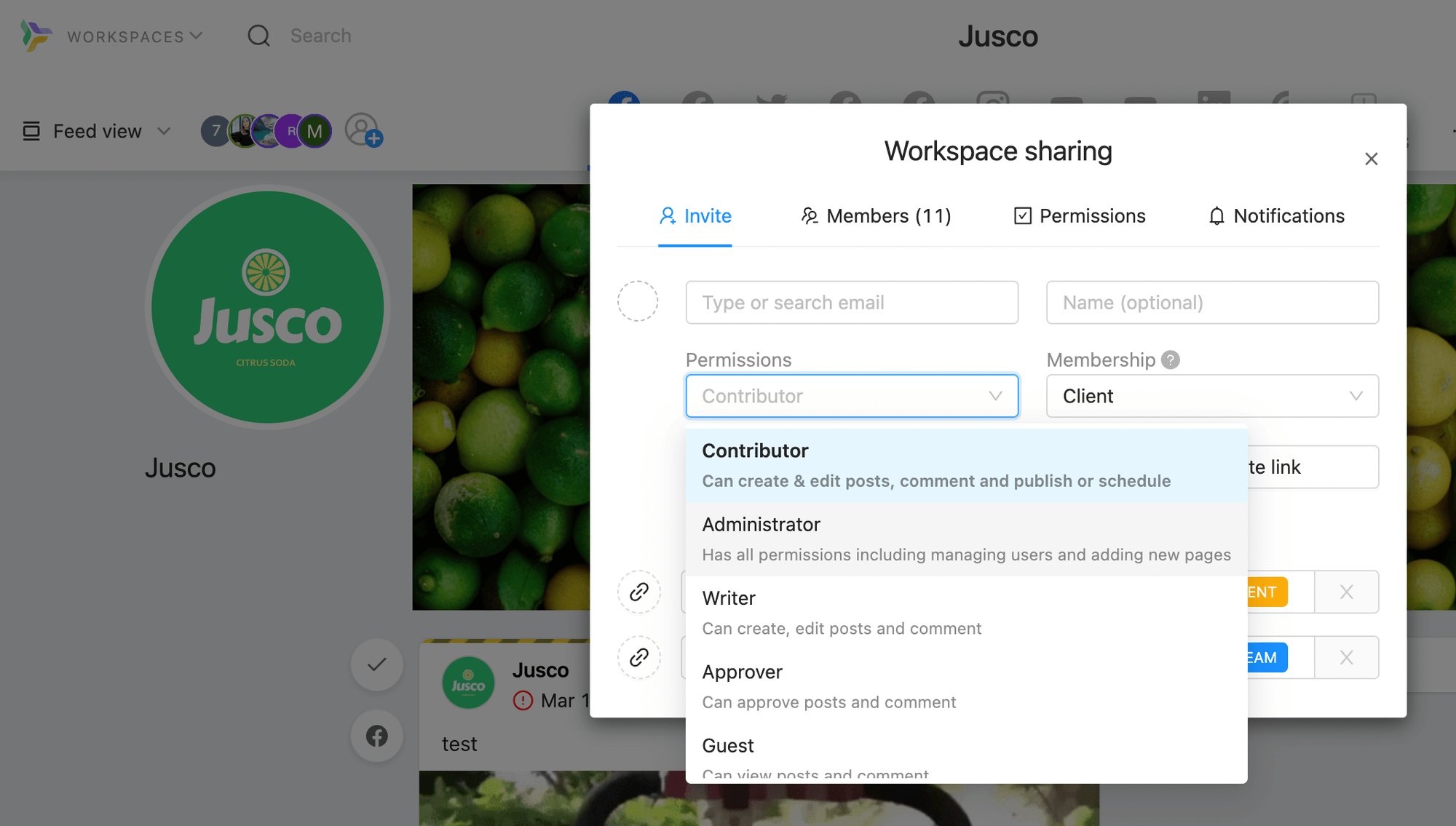

Workspace sharing options in Planable
All these features allow you to have a streamlined, efficient, and intuitive approval process that is easily adopted by the team.
How Planable simplifies content approval
Planable is a user-friendly social media management tool that allows you to easily structure approval layers, ensuring the right eyes review your content quickly and efficiently. Real-time feedback ensures clear communication within your team and with clients, while automated scheduling upon approval saves you valuable time and resources.
By these features combined, you are Captain Content. Try Planable for free to build an effective content approval workflow and give your team collaboration superpowers.

